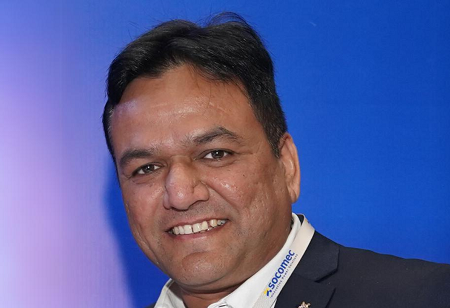
In an exclusive interview with Prince Sharma, General Manager – S&M, Power Switching and Monitoring Business Application, Socomec Greater India, he shares his insights on how pivotal LV power products are in integrating renewable energy into existing energy grids and stabilizing them. He is an experienced corporate professional with a demonstrated history of working in the electrical and electronic manufacturing industry for over 20 years.
What specific LV power products are currently pivotal in the integration of renewable energy sources into existing grids, and what unique roles do they play?
Manual as well as automatic transfer switch equipment act as a bridge for a reliable renewable energy system architecture, ensuring seamless integration. The accrued customer benefit is in terms of higher system availability, enhanced withstand and positive isolation for equipment and personal safety. All versions of our Automatic Transfer Switch Equipment (ATSE) incorporate key design elements aimed at enhanced power availability and offer multiple program options to optimize transfer between the mains and the emergency sources without any hiccups.
How do LV power products address the challenge of intermittency in renewable energy sources, especially in scenarios like sudden drops or surges in generation?
Renewable energy sources cannot generate power around the clock on account of inherent factors. By integrating the Automatic Transfer Switching Equipment architecture in a renewable energy power scheme, the resultant system offers a high Mean Time Between Failures(MTBF) and lower Mean Time to Recovery (MTTR), factoring in unanticipated and unfavorable power scenarios. The consumers need to either adjust their electricity demand to synchronize with the renewable generation or alternatively, backup systems need to be integrated to ensure seamless power availability for all critical and important loads. Socomec offers Automatic Transfer Switching Equipment (ATSE)solutions tailor-made for the growing market demand across various applications like valve actuators, precision cooling, pump motors, and fan units, as well as for source transfers in main power distribution.
Could you elaborate on the role of LV products in maintaining grid stability amidst the increasing variability introduced by renewable energy sources?
LV products are crucial for grid stability amidst renewable energy variability. They provide voltage regulation, power quality improvement, and demand response. As specialists in LV DC isolation and transfer switches, Socomec ensures grid stability amidst renewable energy variability through precise isolation, reliable transfer switching, and efficient energy management. With advanced transfer switches and isolation devices, grid operations can be safeguarded, ensuring continuity and reliability in the face of fluctuating renewable energy inputs.
In your experience, what are the most pressing technical limitations that these products face when accommodating the growing penetration of renewable energy, and what strategies are being developed to overcome them?
The most pressing limitations LV products face with the growing penetration of renewable energy include intermittency, grid integration challenges, voltage fluctuations, power quality issues, and protection coordination. To address these, Socomec not only follows current trends but also anticipates future customer needs, employing advanced solutions. Our INOSYS PV isolation 2000 VDC, for example, meets the rising demand beyond the current 1500 VDC PV systems, preparing for up to 2000 VDC in the coming years. These strategies ensure the seamless integration, stability, and reliability of the grid amidst the variability introduced by renewable energy sources.
Considering the evolving landscape of renewable energy technologies, how do LV power products adapt and evolve to support new forms of renewable generation, such as advanced solar panels or offshore wind farms?
At every stage of Renewable Energy generation, be it for main or for sub-distribution, there is a need for AC as well as DC isolators which can be operated manually or through motors. These are capable of adapting to contemporary operational voltage levels. Enhanced grid integration, offering scalability and enhancing grid resilience, Socomec-designed LV power products play a crucial role in enabling the widespread adoption of renewable energy technologies and accelerating the transition to a sustainable energy future.
Could you provide examples of innovative LV power product deployments or projects that have significantly advanced the integration of renewable energy into LV grids, and what lessons have been learned from these experiences?
Telecom towers in remote locations, with hybrid renewable systems, involving our Transfer Switching Equipment range are the perfect proving ground for enhanced performance. The use of Advanced Battery energy storage systems, incorporating a high-withstand ESS range of manual and motorized DC isolators, is another instance of Socomec’s state-of-the-art technology of LV power products used inside renewable energy architecture.
What role do LV power products play in enhancing grid resilience and ensuring continuity of supply during extreme weather events or other disruptions, particularly in regions with high reliance on renewable energy?
Renewable energy needs to be comprehensively managed to maintain grid stability. The grid resilience is ensured by having enclosed ATSE in an IP-rated enclosure to avoid direct contact with electronic parts of ATSE. At Socomec, we design and manufacture our products with sustainability as a priority. We are deeply committed to environmental sustainability and digitization in our manufacturing processes. We continuously develop new strategies to enhance energy efficiency, minimize harmful impact, and integrate advanced digital technologies into our products.
We use cookies to ensure you get the best experience on our website. Read more...